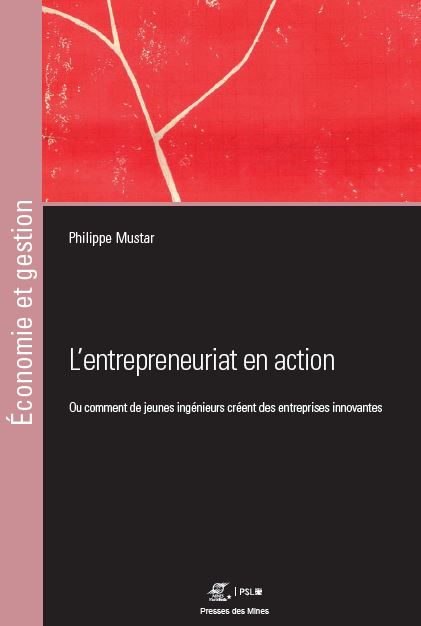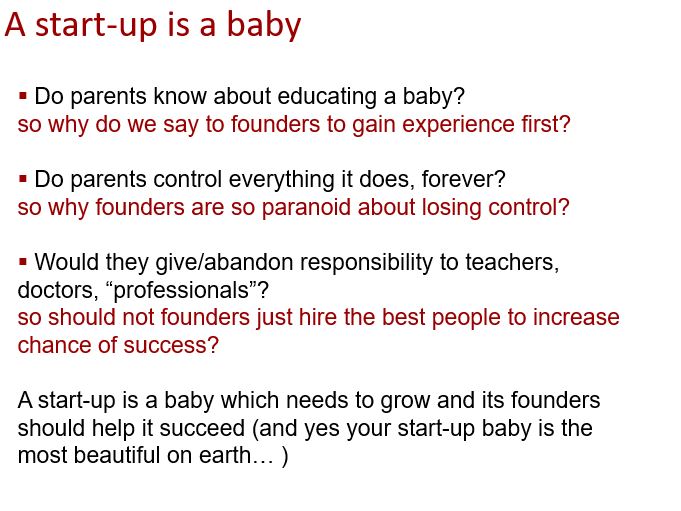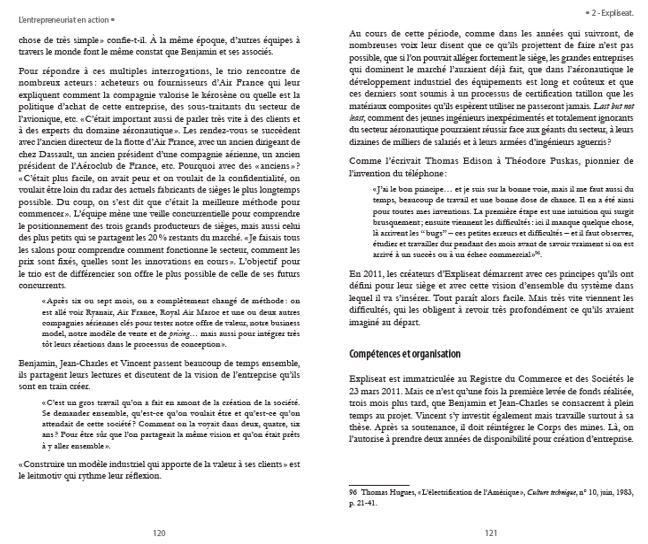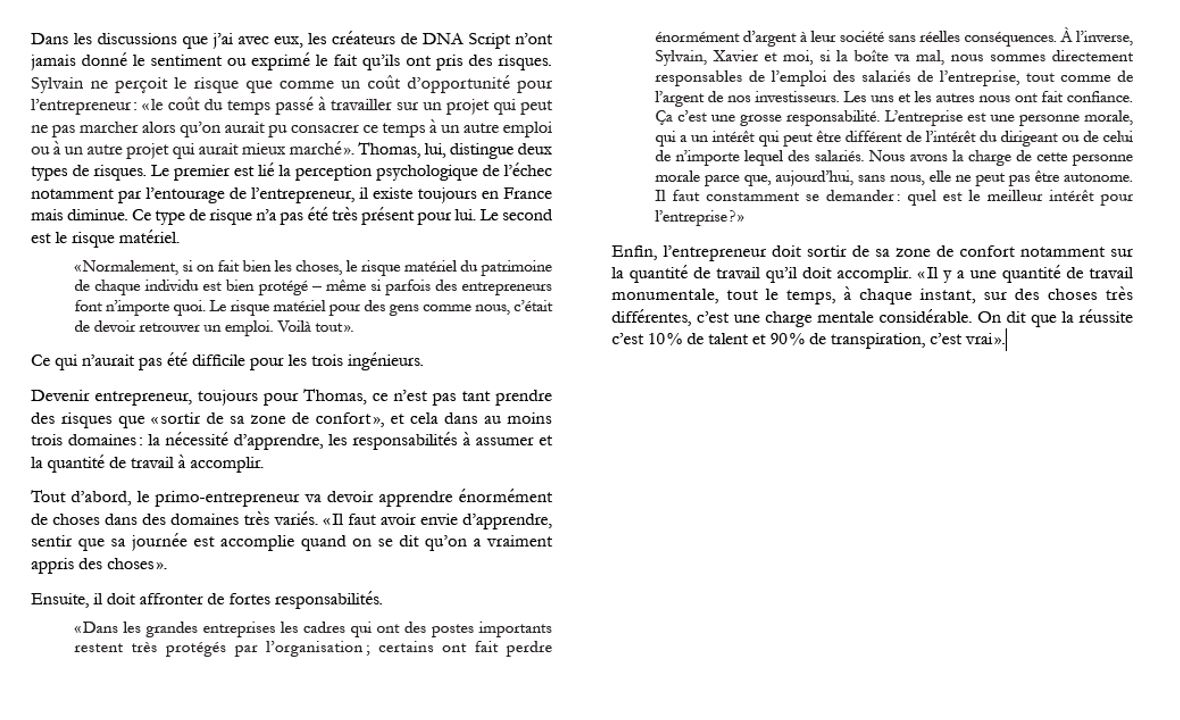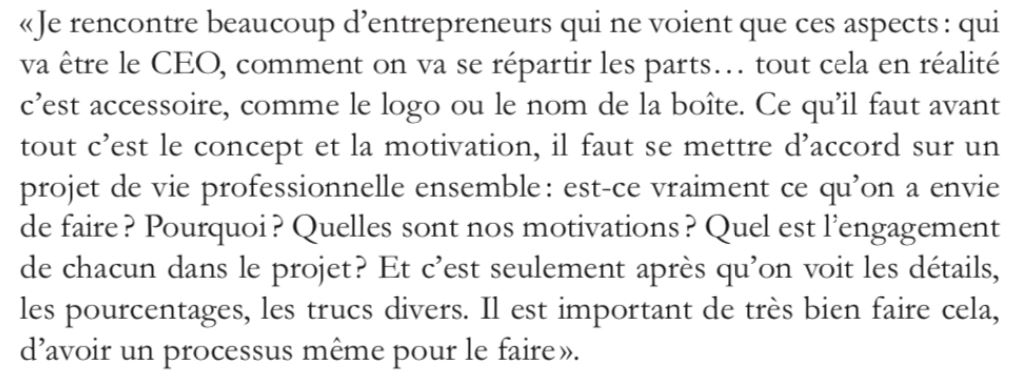Here is my last article on the excellent Entrepreneurship in action of which you will find the 5 previous articles with the tag #entrepreneurship-in-action. Here are some final notes:
The ingredients of success
But, those who fund this project are not doing it just for the skills and experience of the three entrepreneurs. They show other qualities that convince to follow them: their passion, their motivation, their ambition. Investors know that these qualities will allow the team to stay focused and better deal with the many uncertainties that lie ahead. To a student who asked a venture capitalist what are the three most important qualities that a project must have to be financed; he replied: the first is the team, the second is the team, the third is the team. Another joke, common in this industry, says that investors prefer to finance a good team with a bad project rather than the other way round (because a good idea carried by a team whose skills do not match those necessary to developing it is unlikely to go far; while a good team will always be able to modify, transform or change an initial idea of low quality). The rest of the story shows that these statements, usually made in the tone of a joke, apply particularly well to Criteo and that those who make them, the venture capitalists, will have to believe in them and hold onto them firmly for several years. [Page 220]
Some criteria explaining success (according to one of the co-founders of Criteo):
– Have been able to focus on a single product
– Aim for excellence in all areas of the company
– Find the right cursor between managing daily problems and anticipating the future
– The ability to make difficult decisions
– Trust in technology
And finally Mustar returns to this process of innovation which looks like anything but a mechanical process:
– A long and winding process, made of many transformations
– An emerging process
– An experimental process
– A process filled with uncertainties, choices to be made, decisions to be made
– A collective process and a distributed action
– A social process
What is an entrepreneur? Are you born an entrepreneur or do you become one?
Mustar addresses in his conclusion a topic as old as startups with all the humility and caution, because it seems like we don’t really know (even if many claim they do know). Apart from the tautological definition, the entrepreneur is the one who creates (and builds) a business, it seems very difficult to find common traits and qualities specifically for entrepreneurs. Still, I am less confortable with his reminder of Peter Drucker’s claim. “Most of what you hear about entrepreneurship is all wrong. It’s not magic; it’s not mysterious; and it has nothing to do with genes. It’s a discipline and, like any discipline, it can be learned.” [Page 287]
I’m a little more comfortable with Komisar’s point of view in How Do You Teach High-Tech Entrepreneurship according to Randy Komisar.
There is no such thing as a monolithic entrepreneurial condition. Even among the very small number of first-time entrepreneurs I interviewed, there is a very diverse range of relationships with entrepreneurship. What characterizes them, beyond the great diversity of their profiles, their temperament, their way of behaving, is more a desire to do, to learn, to succeed, a great capacity for work, listening to others, ambition… but this is by no means specific to entrepreneurs. We find these same desires or aptitudes among employees, executives of large companies, philanthropic activities, athletes, artists, etc. [Page 289]
This journey with these young engineers allowed me to get rid of a conception of entrepreneurship that separates on the one hand an entrepreneur or a team, and on the other an activity of creating a new product and a company. The entrepreneur and the company are built together, in the same movement. [Page 290]

